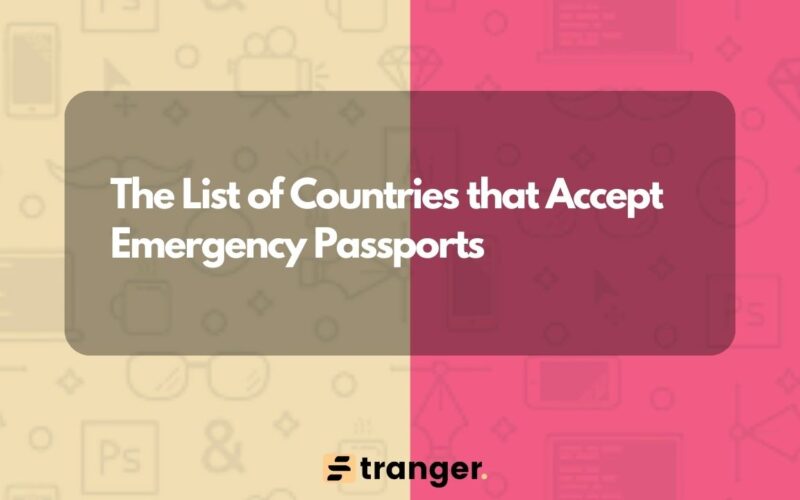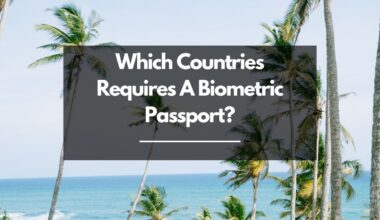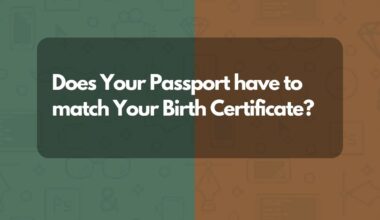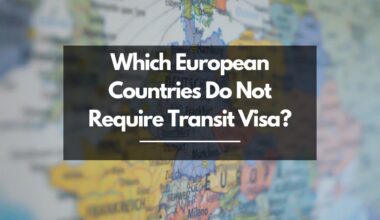As an Amazon Associate, I earn a small commission from qualifying purchases. Learn more about this.
Traveling can be full of surprises, some not as pleasant as others.
Losing your passport or needing a quick replacement can be stressful.
But don’t worry, we’ve got you covered.
In this article, we will guide you through countries that accept emergency passports. Whether you’re stuck in a foreign place or planning, stick around.
The List of Countries that Accept Emergency Passports
1. European Union (EU) Countries

First on our list is the European Union.
If you’re holding an emergency passport, most EU countries will welcome you. T
his includes popular destinations like France, Germany, Italy, and Spain.
In these countries, your emergency passport is just as good as a regular one, but remember, it’s always wise to double-check entry requirements before your trip, as rules can change.
2. United Kingdom (UK)
The UK, known for its rich history and iconic landmarks, is also on the list.
Here, an emergency passport is accepted for both entry and exit. It’s a relief, especially if you’re caught in a bind while enjoying the sights of London or exploring the Scottish Highlands.
Just ensure your emergency passport has all the necessary visas, as the UK is no longer part of the EU.
3. United States (US)
Crossing the Atlantic, the United States recognizes emergency passports for citizens of many countries.
If you dream of visiting New York, exploring the Grand Canyon, or walking the Hollywood Walk of Fame, an emergency passport won’t stop you.
However, it’s important to check if you need a visa or an ESTA approval, as entry requirements vary based on your nationality.
3. Canada
Our neighbor to the north, Canada, is known for its welcoming nature, and this extends to travelers with emergency passports.
Whether you’re visiting for business, leisure, or transit, Canada recognizes emergency passports. But, just like with the US, make sure your travel documents meet all visa requirements or exemptions.
4. Australia and New Zealand
Heading down under, both Australia and New Zealand accept emergency passports from the UK.
These countries offer breathtaking landscapes and unique wildlife.
However, it’s important to obtain the appropriate visas or Electronic Travel Authority (ETA) beforehand. Their immigration policies are quite strict, so being prepared is key.
5. Asian Countries
In Asia, countries like Thailand, Singapore, and Japan accept emergency passports. Each of these countries has its own charm, from the bustling streets of Bangkok to the serene gardens of Kyoto.
Be mindful of their specific visa regulations, as Asia is a tapestry of diverse immigration policies.
How Emergency Passport Works
Let’s shift gears and talk about what an emergency passport really is and how it works.
Think of an emergency passport as a temporary solution, a bridge that gets you safely over the waters of passport mishaps to your desired destination.
What is an Emergency Passport?
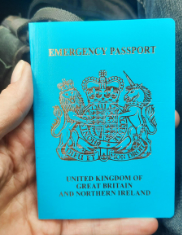
An emergency passport is a temporary document issued under urgent circumstances, like if your regular passport is lost, stolen, or severely damaged. It’s not as fancy or as thick as your regular passport, but it serves the same purpose: it identifies you and allows you to cross international borders.
How Do You Get One?
The process varies slightly from country to country, but the general steps are similar. First, you’ll need to visit your country’s embassy or consulate. It’s a good idea to call ahead or check their website for specific requirements. Typically, you’ll need to fill out an application form, provide identification (like a driver’s license or ID card), and show proof of your travel plans, like flight tickets. They might also ask for a police report if your passport was stolen.
What to Expect
Here’s the real talk: getting an emergency passport can be a bit of a wait, sometimes a few hours, sometimes a day or two. The embassy staff work as fast as they can, but it’s not instant. The passport you get will look different from your regular one – fewer pages and a shorter validity period, usually just enough to cover your trip and get you back home.
Using Your Emergency Passport
Once you have your emergency passport in hand, you can use it to travel to countries that accept them (as we discussed earlier). But remember, this is a temporary document. When you get back home, you’ll need to apply for a regular passport.
Tips for Traveling with an Emergency Passport
Now, let’s talk about some practical tips. Always carry additional identification and travel documents. This could include a driver’s license or a copy of your birth certificate. It’s also wise to keep digital copies of all your documents in a secure online storage.
Before traveling, contact the embassies or consulates of your destination countries to confirm their current policies on emergency passports. Policies can change, and the last thing you want is an unexpected hurdle.
Lastly, remember that an emergency passport is typically valid for a shorter period than a regular passport. Ensure that its validity covers the duration of your trip and any potential unforeseen delays.
Conclusion
In conclusion, many countries around the world accept emergency passports, but the key is to be well-informed and prepared. Each country has its own set of rules and requirements, and staying updated on these is crucial for a hassle-free travel experience.
As someone who loves to explore, I understand the importance of having reliable information at your fingertips. Hopefully, this guide eases your concerns and helps you in planning your travels, even in the most unexpected situations. Safe travels!
